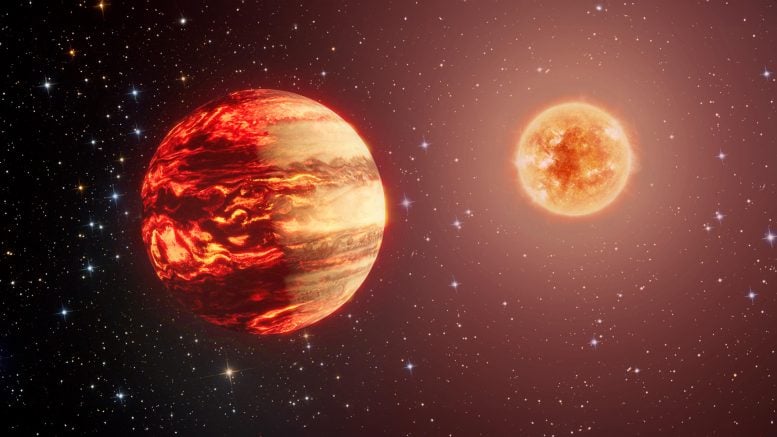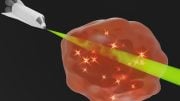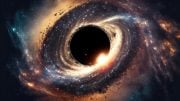
A research team has identified brown dwarfs orbiting close to bright stars, an observation made possible by the Gaia satellite and the Very Large Telescope’s GRAVITY instrument. These findings, revealing brown dwarfs in orbits similar to Earth’s distance from the sun, provide new insights into their formation and the dynamics of celestial bodies. Credit: ESA, edited
Astronomers have successfully observed brown dwarfs near bright stars for the first time, using the Gaia satellite and the Very Large Telescope’s GRAVITY instrument.
Out of eight celestial bodies studied, five were identified as brown dwarfs, challenging existing models with their close orbits and unexpected luminosity characteristics. This achievement not only highlights new capabilities in space observation technology but also enhances our understanding of substellar objects and planetary formation.
Groundbreaking Discovery in Astronomical Imaging
In a feat for precise astronomical imaging, astronomers have for the first time ever observed brown dwarfs orbiting very near bright stars. The team of scientists included French researchers from the CNRS, Université Grenoble Alpes, and the Observatoire de Paris-PSL.[1]
The Nature and Challenges of Observing Brown Dwarfs
Out of the eight companions[2] imaged, the researchers determined that five were brown dwarfs, substellar celestial objects that are still poorly understood, neither stars nor planets but something in between.[3] Brown dwarfs are very hard to detect because of their low luminosity, especially when adjacent to stars a thousand times brighter.
Those identified in this study orbit their stars at distances equivalent to that between our planet and the sun. Such short distances raise questions about the brown dwarfs’ formation. Furthermore, certain fluxes observed are weaker than predicted by scientific models. This could mean some of the brown dwarfs belong to binary systems—that is, they may themselves be orbited by smaller companions.
Advanced Technology Unlocks New Observations
These unprecedented observations were made possible by the combined use of two instruments: the Gaia satellite and the Very Large Telescope Interferometer (VLTI) on Cerro Paranal in Chile. Data from Gaia, cataloging hundreds of thousands of multiple systems and recording their positions and movements, allowed the scientists to identify eight celestial objects for targeted observation by the VLTI’s GRAVITY instrument, which acts a magnifying glass.
Though it can measure the tiniest features of stellar objects with unparalleled precision,[4] GRAVITY must be aimed at precise areas—which was the job of Gaia. After GRAVITY picked up the light signals of the eight companions identified with Gaia, the scientists analyzed their luminosity and mass,[5] permitting them to conclude that five were brown dwarfs. Such ‘hidden companions’ of stars had eluded observation until now.
Implications for Astronomical Understanding
The team’s findings, to be published in Astronomy & Astrophysics on June 20, give a first glimpse of the power offered by coupling Gaia with GRAVITY. They also afford new insights into the formation not only of these unusual celestial objects—brown dwarfs—but also of massive exoplanets and the planets of our solar system.
For more on this research, see Advanced Telescopes Reveal Hidden Worlds Orbiting Bright Stars.
Notes
- The following French research units participated in the study: the Laboratoire d’Études Spatiales et d’Instrumentation en Astrophysique (Observatoire de Paris–PSL / CNRS / Sorbonne University / Université Paris Cité), the Institut de Planétologie et d’Astrophysique de Grenoble (CNRS / Université Grenoble Alpes), the Laboratoire d’Astrophysique de Marseille (Aix-Marseille University / CNES / CNRS), and the Lagrange laboratory (CNRS / Côte d’Azur Observatory / Université Côte d’Azur).
- A companion is a celestial body orbiting a star.
- The ability to generate energy, and thus emit light, is one characteristic that sets stars apart from planets. Unlike planets, stars are massive enough to burn the hydrogen at their cores. Brown dwarfs, on the other hand, while not massive enough to burn hydrogen, are still far massive than planets: about thirty times more than Jupiter but thirty times less than the sun, our solar system’s star.
- GRAVITY uses a technique called interferometry, whereby several earthbound telescopes aimed at the same celestial object enable observations at a very high resolution—so that even very small objects of low luminosity may be viewed.
- Luminosity and mass are two key indicators for understanding how a celestial object cooled over time, and thus retrace the history of its formation.
Reference: “Combining Gaia and GRAVITY: Characterising five new directly detected substellar companions” by T.O. Winterhalder, S. Lacour, A. Merand, J. Kammerer, A.-L. Maire, T. Stolker, N. Pourre, C. Babusiaux, A. Glindemann, R. Abuter, A. Amorim, R. Asensio-Torres, W.O. Balmer, M. Benisty, J.-P. Berger, H. Beust, S. Blunt, A. Boccaletti, M. Bonnefoy, H. Bonnet, M.S. Bordoni, G. Bourdarot, W. Brandner, F. Cantalloube, P. Caselli, B. Charnay, G. Chauvin, A. Chavez, E. Choquet, V. Christiaens, Y. Clénet, V. Coudé du Foresto, A. Cridland, R. Davies, R. Dembet, J. Dexter, A. Drescher, G. Duvert, A. Eckart, F. Eisenhauer, N.M. Forster Schreiber, P. Garcia, R. Garcia Lopez, T. Gardner, E. Gendron, R. Genzel, S. Gillessen, J.H. Girard, S. Grant, X. Haubois, G. Heißel, Th. Henning, S. Hinkley, S. Hippler, M. Houlle, Z. Hubert, L. Jocou, M. Keppler, P. Kervella, L. Kreidberg, N.T. Kurtovic, A.-M. Lagrange, V. Lapeyrere, J.-B. Le Bouquin, D. Lutz, F. Mang, G.-D. Marleau, P. Molliere, J.D. Monnier, C. Mordasini, D. Mouillet, E. Nasedkin, M. Nowak, T. Ott, G.P.L. Otten, C. Paladini, T. Paumard, K. Perraut, G. Perrin, O. Pfuhl, L. Pueyo, D.C. Ribeiro, E. Rickman, Z. Rustamkulov, J. Shangguan, T. Shimizu, D. Sing, J. Stadler, O. Straub, C. Straubmeier, E. Sturm, L.J. Tacconi, E.F. van Dishoeck, A. Vigan, F. Vincent, S.D. von Fellenberg, J. Wang, F. Widmann, J. Woillez and S. Yazici, 20 June 2024, Astronomy & Astrophysics.
DOI: 10.1051/0004-6361/202450018









Be the first to comment on "Gaia and GRAVITY Unmask Brown Dwarfs Lurking Near Bright Stars"